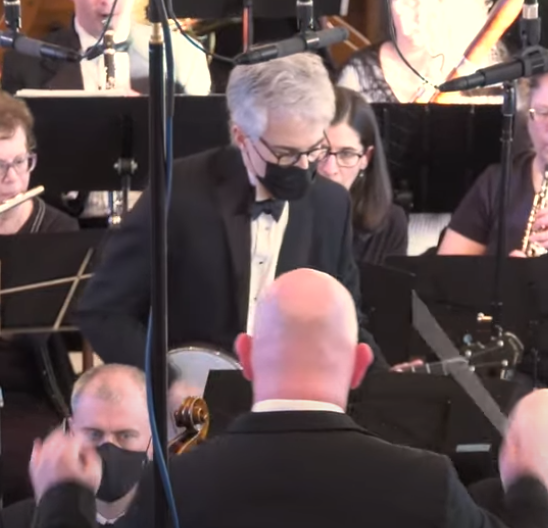My brief tenor banjo career
Brief but symphonic.

During the first pandemic summer I asked my wife for a cheap tenor banjo for my birthday. These are tuned like a viola and smaller than the traditional five-string banjos used for bluegrass. Instead of fingerpicking patterns with the right hand like bluegrass banjos are famous for, tenor banjo players strum chords with a pick for volume as a rhythm instrument. When you hear a banjo in old-timey jazz, that’s a tenor. (Around the time the ground was being laid for bebop, Charlie Christian showed that an amplified electric guitar could do a lot more than a banjo, so banjos faded from use in jazz groups outside of trad and Dixieland circles.) It was also fun knowing that the chords that I learned for the tenor banjo could work on the viola; composer Jessie Montgomery’s wonderful piece Strum was also an inspiration toward thinking about plucking chords on this otherwise bowed instrument.
When the Waynesboro Symphony Orchestra was rehearsing William Grant Still’s Afro-American Symphony in February of last year, after the third movement the conductor Peter Wilson told us that the actual performance would include a harp, a xylophone, and a banjo. On the next break I went up to him and said “that would be a tenor banjo, right? Because of the old time jazz effect? If so, I have one.” (“Rhapsody in Blue” by Still’s friend and arranging student George Gershwin also includes a tenor banjo.) He said “bring it!”
Here is that movement as we performed it at Waynesboro’s First Presbyterian Church. To make it easier for the audience to hear the banjo, Peter had me stand practically right in front of him for this movement. (You will see links in YouTube to the other movements, where I am in the back row of the violas.)
Tenor Banjo Chord Cheat Sheet
To get to know the instrument when I first got it I went through several books and many Internet charts of chords to learn. I eventually scrawled a single-page chart of the chord forms that I thought were most useful. I wanted to share that with others, but I didn’t want to share the actual scrawl, so I made a neater PDF version of my Tenor Banjo Chord Cheat Sheet. The first three rows show a few forms of major, minor, and (dominant) seventh chords, which should be enough for people doing most simple songs. The last three rows show half-diminished, sharp 5, and diminished chords for people playing more typical jazz standards.
The chart shows all chords in the open position so that at least one string is played without any left-hand fingers pressing it down, but they all work as bar chords if you play them higher on the neck and press your left first finger across the neck where you see open strings in each chord diagram. I also wrote “R” in each chord diagram under any strings that are playing the root of the chord. That way, if I need (for example) a B flat minor chord, which is not shown on the chart, I can just find the note B flat somewhere on the neck and then pick the minor chord shape from the cheat sheet that is built around the chord’s root being on that string.
I hope this chart can help someone else who decides to try this fun instrument with an important role in early jazz history. My one live gig with it was certainly an interesting experience.
Comments? Reply to my tweet (or even better, my Mastodon message) announcing this blog entry.

Share this post